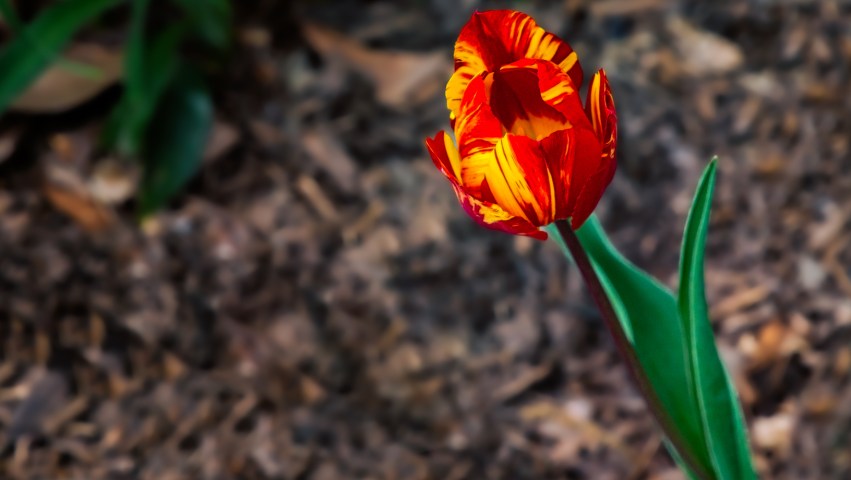From “May-Day” in The Selected Writings of Ralph Waldo Emerson by Ralph Waldo Emerson:
April cold with dropping rain
Willows and lilacs brings again,
The whistle of returning birds,
And trumpet-lowing of the herds.
The scarlet maple-keys betray
What potent blood hath modest May,
What fiery force the earth renews,
The wealth of forms, the flush of hues….
Hither rolls the storm of heat;
I feel its finer billows beat
Like a sea which me infolds;
Heat with viewless fingers moulds,
Swells, and mellows, and matures,
Paints, and flavors, and allures,
Bird and brier inly warms,
Still enriches and transforms,
Gives the reed and lily length,
Adds to oak and oxen strength,
Transforming what it doth infold,
Life out of death, new out of old…
Fires gardens with a joyful blaze
Of tulips, in the morning’s rays….
From Garden Flora: The Natural and Cultural History of the Plants In Your Garden by Noel Kingsbury:
“The extraordinary outburst of financial speculation in the province of Holland during the 1630s (‘tulipomania‘) is well known. Although still theoretically under Spanish rule, the Dutch had been building up an extremely successful economy, largely through trade, with many of the key aspects of modern capitalism being invented in Amsterdam; however, given the country’s geography, investment in land was difficult — so money had to seek other routes to grow. Tulips were one such speculative investment; they became status symbols for the newly rich merchant and financier class, which stimulated both a rise in prices and efforts to breed ever more exquisite blooms….
“The most sought-after bulbs were those infected with the tulip breaking potyvirus, which caused elaborate streaking in the petals. As far as the breeder was concerned, a tulip was only as good as its infection, which (since there was no understanding of either genetics or viruses) had to be left entirely to chance.”
Hello!
This is the second of two posts featuring photos of tulips I took a few weeks ago; the first post is Some Time with Red Tulips (1 of 2). A few of these streaked varieties appeared in that first post; this one shows some with peppermint stripes and those with large streaks of yellow and orange. And today we learned that the presence of these streaks is not just a flower variation: the streaks are caused by tulip breaking virus — and tulips are only one of two plant genuses (the other is lilies) where potyvirus causes color variations in the flower petals. Who knew?!?
Ralph Waldo Emerson’s May Day poem is an elaborate meditation on seasonal transitions, especially that of the advent of spring, the emergence of bird-song, and the resurgence of new plants and flowers. I excerpted a very short portion — a section that led up to the (appropriate to my photoshoot) appearance of tulips in morning light — but the poem is much, much longer. If you’d like to take a look at the rest, here’s a link to the whole thing: May-Day by Ralph Waldo Emerson.
Happy May Day! And thanks for taking a look!


















Bitcoin or tulip bulbs, I guess human nature isn’t changing.
Beautiful blossoms though and thanks for the Emerson poem, he’s been one of my favorites since college.
Thank you!
True story: I hardly ever read poetry until I started hunting for flower and nature poems for this site. Now I’m really enjoying it! Eventually I’ll decide on some favorite poets, but for now I’m all over the place as my reading is mostly, uh, plant-based.
Also true: human nature isn’t changing. Fear not, though, because I’ve heard that ChatGPT will save us all… hahahahahahahaha!
I hope our robot overlords let us have gardens.
Yeah, they better leave the gardening to us. I don’t want to see them create Dogwood trees with actual puppies for flowers!
haha what a horrible thought!!